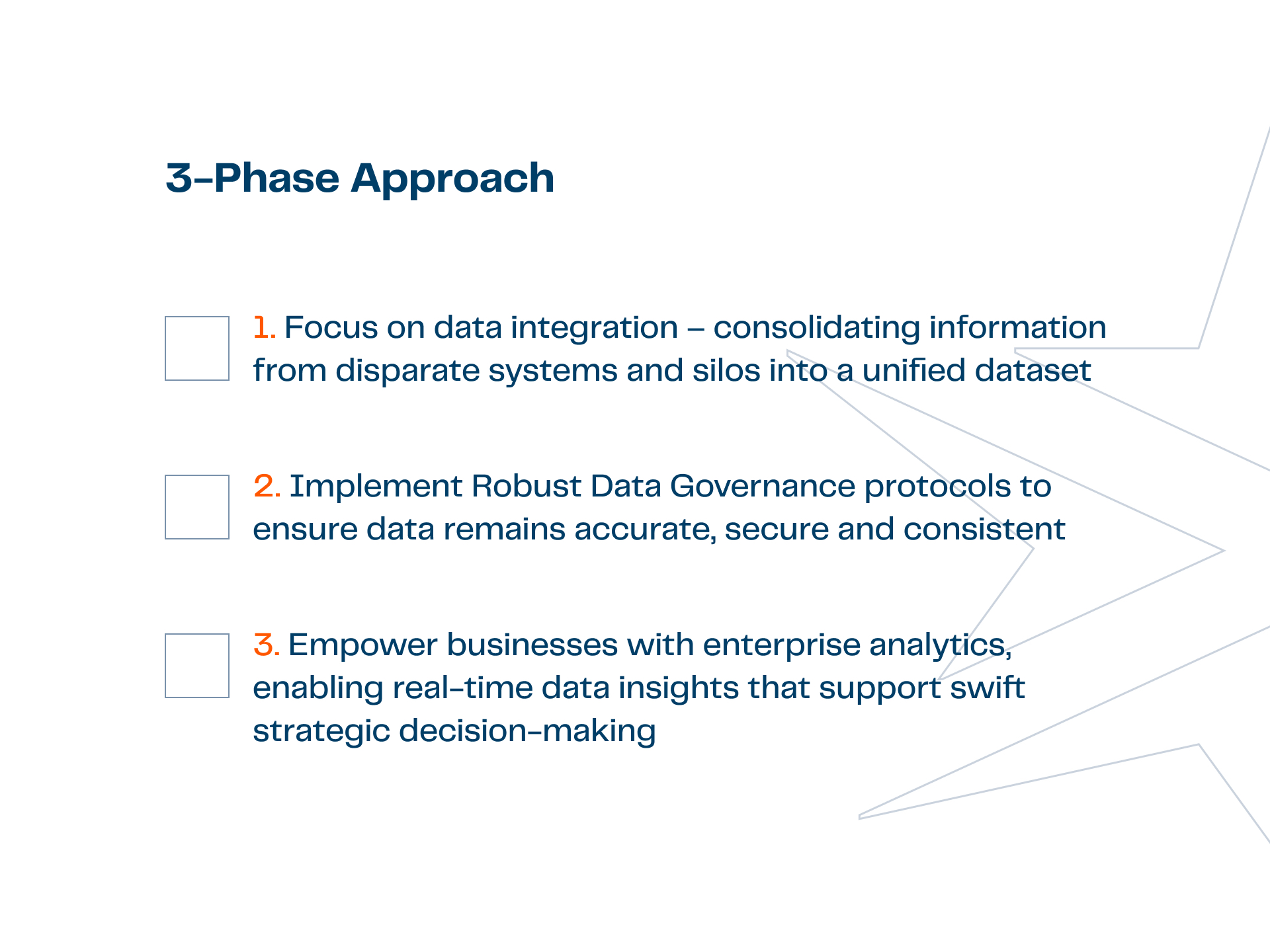Middle-market companies face increasing pressure to maintain their value edge in this competitive financial landscape. Changing economic conditions, technological advancements, and an increasing demand for quick decisions based on cross-functional data have fundamentally reshaped how businesses operate. This means that traditional approaches to performance management are no longer sufficient.
To drive growth, improve profitability, and enhance decision-making, companies can leverage the power of refined operational disciplines – Forecasting, Planning, and Analytics (our take on FP&A). A robust FP&A platform – built with exceptional people, process and systems – can help companies better diagnose business and economic risk, forecast financial outcomes, allocate resources efficiently, and respond swiftly to changes in market conditions. This level of disciplined agility and insight is critical for staying ahead in a competitive market. It can start with a few simple questions, that are critical to ensuring focus and collective action across teams.
- What are the key business questions we need to answer to achieve our goals?
- What data and information are required to answer these questions? Where do they come from?
- How do we measure outcomes & govern success? Do we know what good looks like?
- Are insights & recommendations actionable?
Below, we illustrate how evolving FP&A, technology and data & analytics capabilities to meet the needs of the business can provide the toolkit required to transition from reactive to proactive performance management.
The Strategic Role of FP&A in Middle-Market Growth
Middle-market companies often face significant challenges, including fragmented data, inefficient processes, and a lack of timely insights. These issues can impede required decision-making, making it difficult for businesses to respond effectively to external obligations, market changes and seize growth opportunities across the business lifecycle. Strategic FP&A functions can bring clarity and visibility on how to action for value-creation decisions and “keep score” against your goals.
A strategic FP&A capability built on the right infrastructure of data, insights & collaboration allow our clients to enhance forecasting, streamline budgeting, and adapt quickly to risk & opportunities that arise in the business. Access to a single-source-of-truth data environment connecting fragmented operational data and financial data together is a difficult feat, but with the right FP&A team and tools, this empowers informed decision-making throughout the organization.
Creating a ‘Single Source of Truth’ for Financial and Operational Data
Accurate and reliable financial information is essential. However, managing multiple data sources and systems can lead to inconsistencies, inefficiencies, and errors in financial reporting, mapping and data capture, which disrupts decision-making and hinders growth potential. A fundamental solution is to create a single source of truth—a unified dataset that everyone in the organization can trust. This approach helps eliminate these issues and enables more informed decision-making.
To create a single source of truth, we’ve found a 3-phase approach to integrating financial data from various sources into one cohesive platform provides clarity and control over their financial and operational performance.

Technology is also central in transforming FP&A capabilities. By streamlining data processing and improving visibility into financial and operational metrics, a tech-driven strategy simplifies data management and supports agile financial planning and enterprise analytics. FP&A teams can build the blueprint of requirements, data flows and end-use cases, while technology can bring these to life faster, more reliably and with higher quality over time.
Leveraging Data Analytics for Enhanced Financial Forecasting
One of the key benefits of modern FP&A is the ability to utilize operational analytics for forecasting future trends and making informed decisions. By thoughtfully asking questions on potential outcomes, running for-purpose analytics to measure drivers of change, and scale successful tests to capture new value, companies can anticipate the actions required to maximize value creation across people, profit and cash flow. This capability offers a significant advantage in today’s competitive environment, where agility and foresight are vital for maintaining strong financial health. By adopting analytics tools, rooted in a thoughtful list of key business questions and management systems, organizations can develop more accurate financial models, simulate different scenarios, and execute based on leading cross-functional indicators instead of lagging drivers and intuition. This not only enhances performance outcomes but also supports dynamic forecasting, enabling leaders to adapt their plans as business conditions evolve.
Customized FP&A Solutions for Private Equity Portfolio Companies
Private equity portfolio companies face the dual challenge of navigating unique operational complexities while delivering the accelerated growth and profitability (and reporting requirements) that investors demand. To address these complexities, private equity firms require strong Finance leadership and FP&A processes that can adapt to various business models and provide reliable insights and reporting to manage portfolio operations. To meet these specific demands, private equity firms should consider 3-statement, financial modeling tied to lender reporting, financial reporting and operational reporting with investor thesis included in measurement standards. Potential exits require unique profit, cash and capital insights when tracking performance and forecasting growth. Phased modern technology integration with existing financial and operational systems will reduce scale disruptions for portfolio companies – strong FP&A systems provide focused evaluations on when to make these investments to maximize ROI across the business lifecycle. Scaling technology thoughtfully as the business matures allows organizations to manage current operations, optimize capital allocation and transition smoothly during periods of rapid growth or restructuring.
Continuous Improvement through FP&A Best Practices
To achieve a successful FP&A infrastructure, it’s essential to understand that it’s not just a one-time effort but an ongoing strategic function that grows with your business. Effective FP&A frameworks provide continuous support to ensure financial insights remain relevant and adaptable to changing conditions. Reaching FP&A excellence involves several key practices: setting clear financial goals and metrics, regularly reviewing performance and updating future expectations, promoting actionable collaboration between finance and other departments, and using technology to simplify routine tasks. By establishing these disciplines, companies can focus more time on strategic, high-value activities and decision-making, increasing the probability for successful outcomes. Organizations with an evolving FP&A function to meet the most pressing business needs stay ahead of competitors and enhance financial health with management systems to plan, action, measure and adjust decisions collectively.
Elevate Your Financial Strategy With FP&A
By redefining FP&A as a strategic powerhouse and trusted advisor, rather than merely a back-office function, companies can unlock new opportunities and effectively navigate the financial complexities of scaling their business. A strong FP&A function is equipped with the necessary tools and knowledge to optimize financial processes, leverage advanced technology, and empower businesses to make informed, data-driven decisions.

